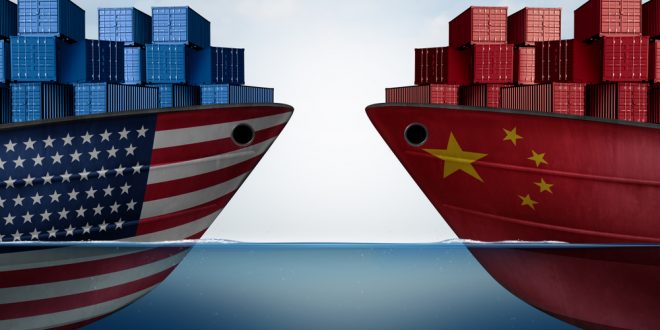On April 8, 2025, the White House rolled out a significant escalation in its trade policy, announcing that a staggering 104% tariff on Chinese imports took effect at noon Eastern Time. White House Press Secretary Karoline Leavitt revealed the measure as a direct counterstrike to China’s imposition of 34% duties on U.S. exports. Collections of these new tariffs are set to begin on Wednesday, marking a bold step in the Trump administration’s ongoing trade war with Beijing. The announcement has sent ripples through global markets and sparked intense debate within the U.S. political and economic spheres.
Market Reactions and Economic Implications
The financial markets responded swiftly to the tariff news. U.S. equity markets, which had seen gains earlier in the day, pared back as investors digested the implications. Gold prices dipped below the $3,000 threshold, though they retained a modest 0.27% increase. Meanwhile, the U.S. Dollar Index (DXY) continued its downward trend, slipping 0.34% to 103.11. These shifts reflect a broader uncertainty as traders weigh the potential for heightened trade hostilities to disrupt global supply chains and economic stability.
Congressional Pushback and Legislative Response
The tariff strategy has also faced skepticism from lawmakers. Republican Senator Thom Tillis of North Carolina expressed doubts about its effectiveness during a Senate Finance Committee hearing, pressing U.S. Trade Representative Jamieson Greer on accountability if the plan backfires. “Whose throat do I get to choke if this proves to be wrong?” Tillis asked pointedly, reflecting concerns about voter backlash. In a bipartisan move, Representatives Don Bacon (R-Neb.), Jeff Hurd (R-Colo.), Josh Gottheimer (D-N.J.), and Gregory Meeks (D-N.Y.) introduced the Trade Review Act of 2025. This House bill aims to curb presidential tariff powers by requiring congressional approval within 60 days of any new duties, with President Trump vowing to veto it if passed.
Voices of Criticism and Concern
Critics across the political spectrum have voiced alarm. Senate Minority Leader Chuck Schumer (D-N.Y.) cited administration infighting as evidence of “chaos” in Trump’s trade strategy, urging an immediate reversal of the “reckless trade war.” Senator Ron Wyden (D-Ore.) lambasted the tariffs as turning the U.S. economy “from the envy of the world to a laughingstock,” while Representative Ro Khanna (D-Calif.) called them “self-destructive” for Silicon Valley’s tech and manufacturing sectors.
Global and Industry Perspectives
Internationally, the tariffs are prompting varied reactions. A foreign minister from Taiwan signaled readiness to negotiate with the U.S., while Cambodia, facing a 49% tariff rate, braces for economic fallout as its factories lose retail orders. A U.S. trade group warned that Cambodian manufacturing won’t return stateside but will instead shift to lower-tariff nations. Meanwhile, some U.S. businesses see mixed outcomes. A popular YouTuber noted that his chocolate bars might become cheaper to produce abroad, while a denim company CEO called for clarity, promising “surgical” price hikes if needed.
Administration’s Next Steps
National Economic Council Director Kevin Hassett revealed that the administration is fielding a “massive number” of negotiation requests from countries seeking tariff exemptions, with plans to prioritize talks imminent. Treasury Secretary Scott Bessent dismissed China’s retaliatory moves as a “big mistake,” suggesting Beijing holds a weak hand in the standoff. President Trump, meanwhile, claimed on Truth Social that China “wants to make a deal” but has yet to reach out, expressing optimism about forthcoming negotiations.
As the U.S. navigates this high-stakes trade gambit, the interplay of economic policy, political infighting, and global reactions continues to unfold, with profound implications for markets and consumers alike.

 Noor Trends News, Technical Analysis, Educational Tools and Recommendations
Noor Trends News, Technical Analysis, Educational Tools and Recommendations




